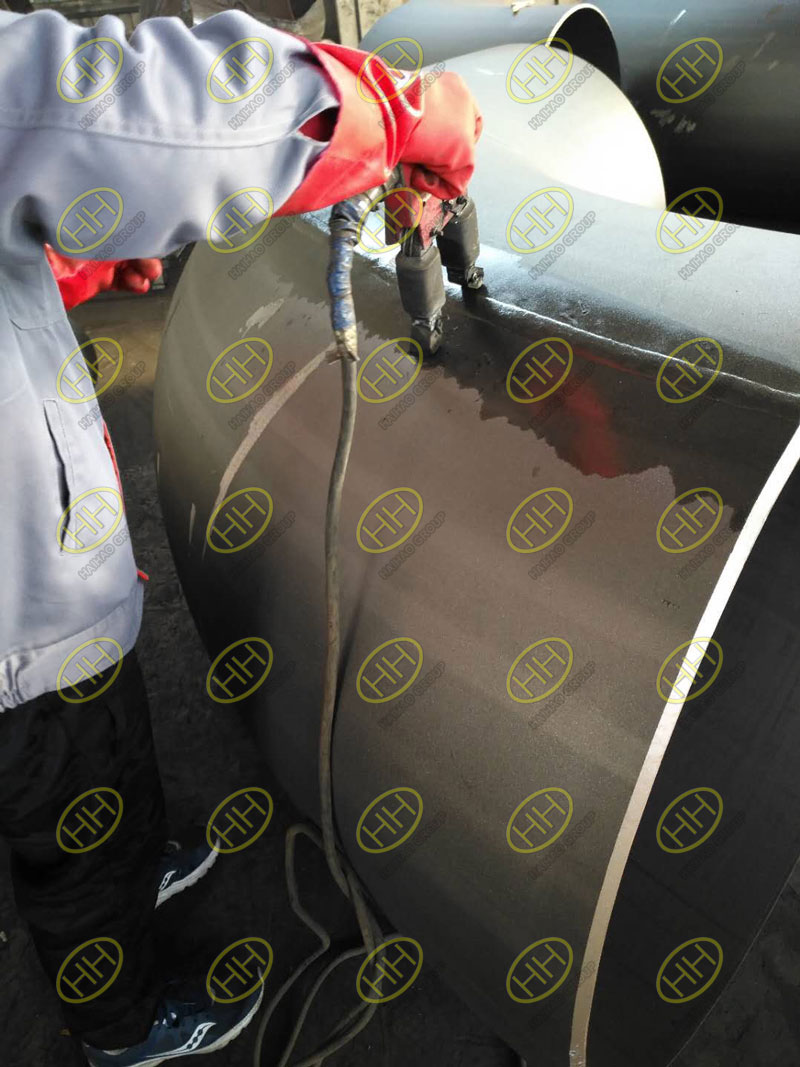Haihao Group conducted magnetic particle testing on the carbon steel pipe fittings ordered by British customers
Haihao Group recently carried out magnetic particle testing on a batch of carbon steel pipe fittings for our valued customer in the UK. Magnetic particle testing is a critical non-destructive testing method essential to ensuring the quality and integrity of metal components. Let’s take a closer look at what this detection method entails.
Magnetic particle inspection, also known as magnetic particle inspection, relies on magnetic particles as a visual medium to detect surface and near-surface defects in ferromagnetic materials. After a ferromagnetic material is magnetized, a strong magnetic induction intensity is generated inside it, and the density of magnetic field lines increases hundreds to thousands of times. If there are discontinuities in the material (including discontinuities caused by defects and discontinuities caused by structure, shape, material, etc.), the magnetic field lines will be distorted, and some magnetic field lines may escape the material surface and pass through space. A leakage magnetic field is formed. The magnetic powder applied to the surface of the workpiece is adsorbed to form visually visible magnetic marks under appropriate lighting, thereby showing the location, size, shape and severity of discontinuities. When the crack direction is parallel to the propagation direction of magnetic field lines, the propagation of magnetic field lines will not be affected, and it is impossible to detect defects. Ferromagnetic materials include iron, cobalt, nickel, gadolinium and their alloys. Among common materials, carbon steel and low alloy steel are ferromagnetic materials. It should be noted that austenitic stainless steel is not a ferromagnetic material.
Key equipment and materials used in magnetic particle testing include:
Magnetic particle flaw detection machines can be divided into fixed, mobile or portable based on size and weight.
Sensitivity test strips for evaluating the performance of magnetic particle inspection equipment, magnetic particles and magnetic suspensions.
Magnetic powder, usually composed of iron oxide or iron powder, is dispersed in a carrier liquid such as water or kerosene. These particles can be fluorescent or non-fluorescent, offering different advantages in terms of visibility and sensitivity.
Magnetic suspension, as the carrier medium for magnetic powder, is equipped with a specific concentration of magnetic powder to obtain the best performance.
Magnetic particle testing has the following advantages:
It is suitable for detecting small defects on the surface and near-surface of ferromagnetic materials, including cracks, strains, welded joints, pores, etc.
Magnetic particle testing can be applied to a variety of materials, including raw materials, semi-finished products, finished components and in-service parts.
This method is effective for materials with magnetic properties, such as carbon steel, low alloy steel, and some stainless steels.
This method is flexible and suitable for components of different shapes and sizes, including plates, profiles, pipes, rods, welded joints, castings and forgings, etc.
However, magnetic particle testing also has limitations:
May not be suitable for workpieces with complex geometries or restricted access.
Magnetic particle testing is primarily suitable for ferromagnetic materials and may not be effective enough for non-ferromagnetic materials.
In conclusion, magnetic particle testing is a valuable non-destructive testing method used by Haihao Group to ensure the quality and safety of carbon steel pipe fittings and other metal components. With our expertise and commitment to quality assurance, we strive to provide reliable and defect-free products to our customers in the UK and beyond.

